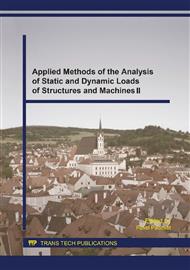p.239
p.243
p.247
p.251
p.255
p.259
p.263
p.267
p.271
The Development of the Fine-Aggregate Concrete Strength with Recycled Cement Powder
Abstract:
This investigation was focused on possibility of use recycled cement powder originating from the construction and demolition concrete waste as partial replacement of cement in concrete mixture. The main goal of this paper is the study of the mechanical properties development of the fine-aggregate concrete with partial cement replacement at the age 7, 14 and 28 days. The compressive strength and dynamic modulus of elasticity were tested in time. The recycled cement powder from fine recycled concrete, which was used as partial replacement of cement, had the same grain size as cement. The concrete mixtures contained 95 %, 90 % and 85 % of cement and residue has been replaced by recycled cement powder. Mechanical properties were tested on cubic and prismatic specimens.
Info:
Periodical:
Pages:
255-258
Citation:
Online since:
February 2016
Authors:
Price:
Сopyright:
© 2016 Trans Tech Publications Ltd. All Rights Reserved
Share:
Citation:


